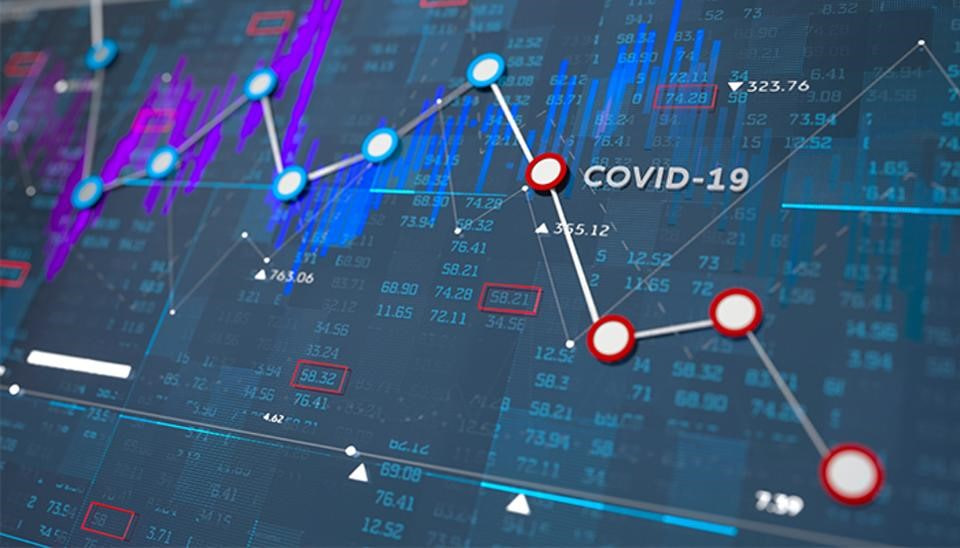Harnessing the Power of Big Data in Agriculture: A Comprehensive Guide to Modern Farming
Meta Description: Unlock the potential of big data analytics in agriculture for improved efficiency, resource management, and food security. Learn about data-driven insights, smart farming technologies, and successful implementation strategies. #BigData #Agriculture #SmartFarming #DataAnalytics #FoodSecurity #PrecisionAgriculture
This isn't your grandpappy's farming! Forget the days of relying solely on gut instinct and old-farmer's wisdom. Today's agriculture is a high-tech, data-driven industry, and at the heart of this revolution lies the incredible power of big data. Imagine a world where weather predictions are pinpoint accurate, allowing farmers to preemptively protect their crops from devastating storms. Picture a system that instantly alerts you to a pest infestation, enabling targeted treatment before widespread damage occurs. This isn't science fiction; it's the reality big data is creating in the agricultural sector. We're talking about the potential for increased yields, reduced waste, enhanced food safety, and ultimately, a more sustainable and secure food supply for a growing global population. This article delves deep into the transformative role of big data in agriculture, exploring its applications, challenges, and the future of farming. We'll explore real-world examples, highlight best practices, and address the critical issues surrounding data security and integration – because let's face it, even the most cutting-edge technology needs a solid foundation to thrive. Get ready to be amazed by the possibilities, because the future of farming is here, and it's smarter than ever. We'll unpack the complexities, simplify the jargon, and equip you with the knowledge to understand and harness this powerful tool for a better tomorrow. Buckle up, because we're about to embark on an exciting journey into the world of data-driven agriculture!
Big Data Analytics in Agriculture: A Game Changer
The application of big data analytics in agriculture is nothing short of revolutionary. It's transforming how we cultivate, monitor, and manage our food production systems, paving the way for a more efficient, sustainable, and resilient agricultural landscape. No longer are farmers relying on guesswork and traditional methods; they're leveraging the power of data to make informed decisions at every stage of the agricultural process. This shift has led to a significant increase in efficiency and productivity, resulting in improved yields and reduced waste.
But what exactly is big data in this context? It's the massive amount of data generated from various sources, including sensors embedded in the soil, weather stations, satellite imagery, farm machinery, and even consumer buying habits. This diverse data pool provides a comprehensive picture of the agricultural ecosystem, offering insights that were previously unimaginable.
For example, imagine using real-time data on soil moisture levels to optimize irrigation, preventing water waste and ensuring crops receive the precise amount of hydration they need. Or consider using predictive analytics to forecast potential crop diseases and implement preventative measures before they take hold, minimizing losses and reducing reliance on chemical pesticides. The possibilities are truly endless.
How Big Data Improves Agricultural Practices
The impact of big data is far-reaching:
-
Precision Farming: Big data enables precision farming techniques, allowing farmers to tailor their approach to each specific area of their land. This might involve varying the amount of fertilizer or pesticides used based on real-time data analysis of soil composition and plant health.
-
Resource Optimization: By carefully analyzing data on water usage, fertilizer application, and pesticide deployment, farmers can significantly reduce resource waste and minimize their environmental footprint. This is crucial in a world facing increasing water scarcity and concerns about sustainable farming practices.
-
Enhanced Decision-Making: Data-driven insights provide farmers with the information they need to make informed decisions regarding planting schedules, crop selection, and harvesting strategies. This leads to improved yields and profitability.
-
Predictive Analytics for Risk Management: Big data empowers farmers to anticipate potential risks, such as extreme weather events, pest infestations, and disease outbreaks, allowing them to take proactive steps to mitigate these threats. This is critical for risk management and ensuring crop security.
-
Supply Chain Optimization: Big data helps optimize agricultural supply chains, from planting to harvesting, processing, packaging, and distribution. This reduces waste, improves efficiency, and ensures that consumers receive high-quality products in a timely manner.
-
Improved Food Safety: By tracking the entire journey of a food product from farm to table, big data enhances food traceability and safety. This allows for quick identification and resolution of any contamination issues, protecting consumers and the reputation of the agricultural industry.
Case Studies: Real-World Successes
Let's look at some real-world examples of big data's impact:
-
North American farms: Many large-scale farms are using sensor technology and big data analytics to optimize irrigation and fertilization, resulting in significant water and fertilizer savings. These farms have also seen increased yields and improved crop quality.
-
African countries: In regions with limited resources, big data is being used to develop early warning systems for crop diseases and pests, enabling farmers to take preventative measures and minimize crop losses.
-
Asian agriculture: Big data is being leveraged to monitor soil health and optimize fertilizer application, leading to increased yields and reduced environmental impact.
These examples illustrate the wide-ranging applications of big data across various agricultural contexts. It's not just a tool for large-scale industrial farming; it's being used to benefit farmers of all sizes and in various regions of the world.
The Role of the Internet of Things (IoT) in Smart Agriculture
The Internet of Things (IoT) is inextricably linked with the success of big data in agriculture. IoT devices, such as sensors, drones, and GPS trackers, collect vast amounts of data from various sources – soil moisture, temperature, humidity, rainfall, etc. – providing real-time insights into the health and condition of crops and the overall farming environment. This data feeds directly into big data analytics platforms, enabling farmers to make data-driven decisions.
Think of it like this: IoT provides the eyes and ears in the field, while big data analytics provides the brains to interpret the information and direct action. Together, they form a powerful synergy that's transforming the agricultural landscape. Without the IoT-generated data streams, big data analytics would be significantly hampered. They are truly symbiotic partners in this agricultural revolution.
Data Security and Privacy Concerns in Agricultural Data Management
While the advantages of big data in agriculture are undeniable, there are also important considerations regarding data security and privacy. The sensitive nature of agricultural data – crop yields, production techniques, and even farm locations – makes it a potential target for cyberattacks. Therefore, robust data security measures are essential to protect this valuable information.
Furthermore, data privacy concerns need to be addressed, particularly regarding the collection and use of data related to individual farmers and their operations. Transparency and informed consent are crucial in ensuring ethical data handling practices. A balance must be struck between leveraging data for agricultural improvement and protecting the privacy rights of farmers.
Overcoming Challenges: Building a Robust Data Infrastructure
Successfully implementing big data in agriculture requires a strong data infrastructure. This involves several key steps:
-
Data Collection: Establishing reliable and efficient data collection methods, using a variety of sensors and IoT devices, is paramount.
-
Data Storage and Management: Secure and scalable data storage solutions are needed to handle the vast amount of data generated.
-
Data Analysis and Interpretation: Sophisticated data analytics capabilities are required to extract meaningful insights from the collected data. This often requires specialized expertise and software.
-
Data Sharing and Collaboration: Effective mechanisms for sharing data among farmers, researchers, and government agencies are essential for maximizing the benefits of big data.
-
Data Security and Privacy: Robust data security protocols and privacy safeguards must be implemented to protect sensitive information.
Frequently Asked Questions (FAQs)
Q1: Is big data technology expensive to implement for small-scale farmers?
A1: The initial investment can be significant, but the long-term benefits often outweigh the costs. There are increasingly affordable solutions and government initiatives aimed at supporting small-scale farmers in adopting big data technologies.
Q2: What skills are needed to effectively use big data in agriculture?
A2: While dedicated data scientists are not always required, basic data literacy and an understanding of data analysis principles are beneficial. Many user-friendly software tools are emerging that simplify data analysis, making it accessible to even novice users.
Q3: How can I ensure the privacy and security of my agricultural data?
A3: Choose reputable data storage and analytics providers with strong security measures in place. Implement robust access controls and encryption techniques to protect sensitive information.
Q4: What are the ethical considerations related to using big data in agriculture?
A4: Data privacy, informed consent, and responsible data sharing practices are critical ethical considerations. Transparency and accountability are essential to ensure the ethical use of big data.
Q5: How can big data help in sustainable agriculture practices?
A5: By optimizing resource use (water, fertilizer, pesticides), reducing waste, and improving yields, big data contributes significantly to sustainable agriculture and environmental conservation.
Q6: What's the future of big data in agriculture?
A6: The future is bright! We can expect to see even more sophisticated applications of AI and machine learning in agriculture, leading to further improvements in efficiency, sustainability, and food security. Expect more integrated systems, better predictive capabilities, and even more personalized farming approaches.
Conclusion
Big data is transforming the agricultural landscape, offering unprecedented opportunities for increased efficiency, sustainability, and food security. While challenges remain, the potential benefits are too significant to ignore. By embracing data-driven technologies and fostering collaboration among stakeholders, we can unlock the full power of big data to create a more resilient and productive agricultural sector for generations to come. The future of farming is smart, and it's powered by data. Let's embrace the opportunity and reap the rewards.



